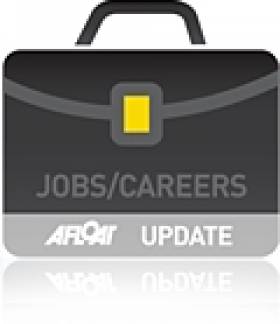Displaying items by tag: performance
#Ports&Shipping - The south Wales Port of Milford Haven, Britain’s biggest energy port, has launched a survey to gather views on its roles and operations as a leading regional business.
The poll, which the Port says is critical to understanding issues faced by its many and diverse stakeholders, is a simple online questionnaire that takes no more than ten minutes to complete.
The Port of Milford Haven is a Trust Port with no shareholders, and its profits must be reinvested within the Port to ensure it remains a strong business at the heart of the local economy for future generations. As the Port’s Chief Executive, Alec Don, explained, a clear understanding of all stakeholder views is a key way in which the Port can ensure it remains accountable.
“The broad scale of our operations, from providing safe navigation for all river users, to supporting and developing strong and diverse businesses across our estates, means that what we do touches on the lives and livelihoods of many people and businesses both locally and regionally,” said Alec.
“It is our duty to listen to all views, be they about our own plans as a business or the numerous ways in which what we do impacts on others,” he added. “As importantly, it helps us build and improve relationships with local organisations, businesses and interest groups with a stake in what happens on and around this Waterway.”
A key finding from last year’s survey was that businesses and residents in Pembrokeshire welcomed the Port of Milford Haven’s role as a driver of the local economy. “Nearly all respondents set great store by a busy port’s ability to create opportunity for local business to emerge and grow,” said Alec. “We are working hard on projects such as Pembroke Dock Marine and Milford Waterfront to bring greater opportunities for local business. Engaging widely, during what will be exciting times, is very important for us.”
A link to the survey can be found at www.mhpa.co.uk
No Red Arrows for VOR Galway
#VOLVO OCEAN RACE - Red Arrow jets will not be returning to the skies over Galway Bay when it hosts the Volvo Ocean Race finale this summer, the Galway Sentinel reports.
The Royal Air Force (RAF) has turned down a request by event organisers to bring its aerobatic display to the City of the Tribes citing 'operational reasons'.
It is understood that the RAF is reducing the number of Red Arrows performances this year due to a shortage of pilots trained to do air displays.
The Red Arrows flyover was one of the highlights of Galway's 2009 hosting of the yacht race.
However, their proposed return was opposed by anti-war campaigners the Galway Alliance Against War, who issued a statement last week declaring the the RAF and another "war outfit" were lined up as entertainment for the race week.
The Galway Sentinel has more on the story HERE.
Titanic Belfast Bosses Want the ‘T Factor’ in Frontline Job Audtions
#TITANIC - Prospective employees at the soon-to-be-opened Titanic visitor centre in Belfast will have to show the ‘T factor’ and give a performance on aspect of the doomed ship’s story, The Irish Times reports.
It’s hoped by bosses at Titanic Belfast that the three-minute scripted ‘interpretative presentation’ - based on one of the centre’s nine galleries - will indicate those candidates with the requisite passion and communications skills for one of the 70 “frontline” jobs up for grabs.
“The audition day will give prospective employees a chance to let their true personalities shine through,” said Titanic Belfast chief executive Tim Husbands.
Titanic Belfast will be one of the largest employers in Northern Ireland’s tourism industry when it opens in March, as well as one of the North’s largest recruiters.
Among its many attractions, it will also bost the region’s largest function suite for conference, weddings and other events, as previously reported on Afloat.ie.
The Irish Times has more on the story HERE.






























































